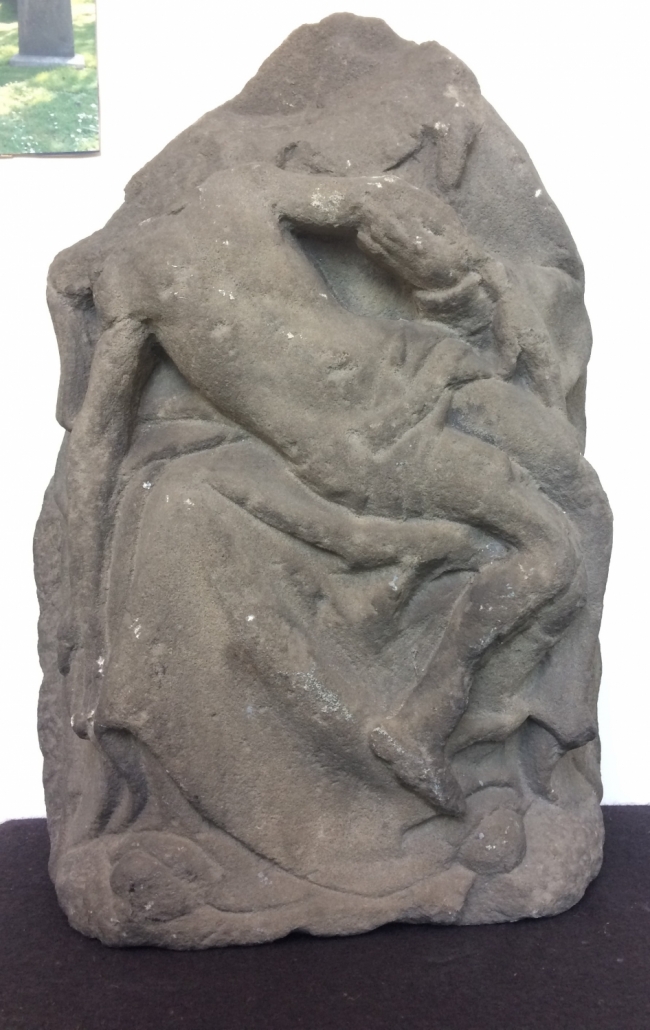In 1862 John Kynoch was digging a grave in the old St Mary’s kirkyard in Banff, then still in use. He hit stone and was, he said, “compelled to use the pick in place of the spade”. Then he realised he had uncovered part of a statue. The pick had done serious damage in the process. Not being an archaeologist, he did not gather up the bits broken off. He took his find to the manse, where it stayed for a time, but then was put back in the kirkyard as an attraction for visitors. Twenty years later, there was a gathering of the northern Scientific Societies at Banff, and they were shown Mr Kynoch’s find. The learned minister of Nairn, Dr Grigor, said ‘That is a late-mediaeval Pieta”. The Catholic priest at Banff, Fr Chisholm, later a bishop, contradicted him, because the Middle Ages are Catholic, not Presbyterian, territory. It was too small to be a Pieta. He thought it might be part of a set of Stations of the Cross, the one that shows Christ being taken down from the cross after the crucifixion. Perhaps you could have a version of the thirteenth station showing him being lifted down and placed on his mother’s lap.
The statue was taken to Edinburgh and showed to scholars there, and Dr Grigor brought a picture of Michelangelo’s Pieta in Rome to the next meeting of the Banffshire Field Club, and it was agreed that what Banff had was a Pieta. It is likely that the word Pieta was a new one to Banffshire. Now classified and recognised as an amazing local survival of medieval art, the Pieta was at once moved to Banff Museum in 1883, and it has been there ever since. There is little doubt that it is local. A stonemason could tell you this is old red sandstone, common along this coast, and still quarried in Morayshire. (Incidentally old red sandstone can be yellow too.) Some say that the fact that the heads are missing is evidence of deliberate iconoclasm at the Reformation, but Banff quite liked images of Our Lady, and across the room in the Museum is the original Mercat Cross, with a statue of the Virgin and Child which survived in a public place throughout the Reformation and on. It is sadly possible that a man with a pick will knock off bits that stick out before he realises he has found a statue.
In a way, Michelangelo’s masterpiece has been a nuisance in interpreting what we have got in Banff, as if the sculptor in Banff must have had it as his model. On the continent there were hundreds of Pietas going back 200 years before Michelangelo, most common in Germany, but in France and Italy as well. No other Pietas, or indeed Stations of the Cross, have emerged from mediaeval Scotland. It is actually a problem to make one that looks right. A mother with a baby is easy, but a woman with the corpse of a full-grown man looks not just tragic but somewhat grotesque. So earlier Pietas often do not achieve what Michelangelo managed. Measured against them our Banff sculptor did all right.
Presumably it stood in the parish church, or perhaps in the Carmelite church, now lost.

